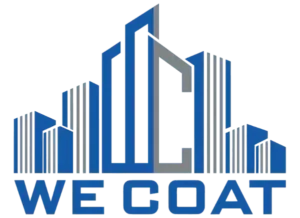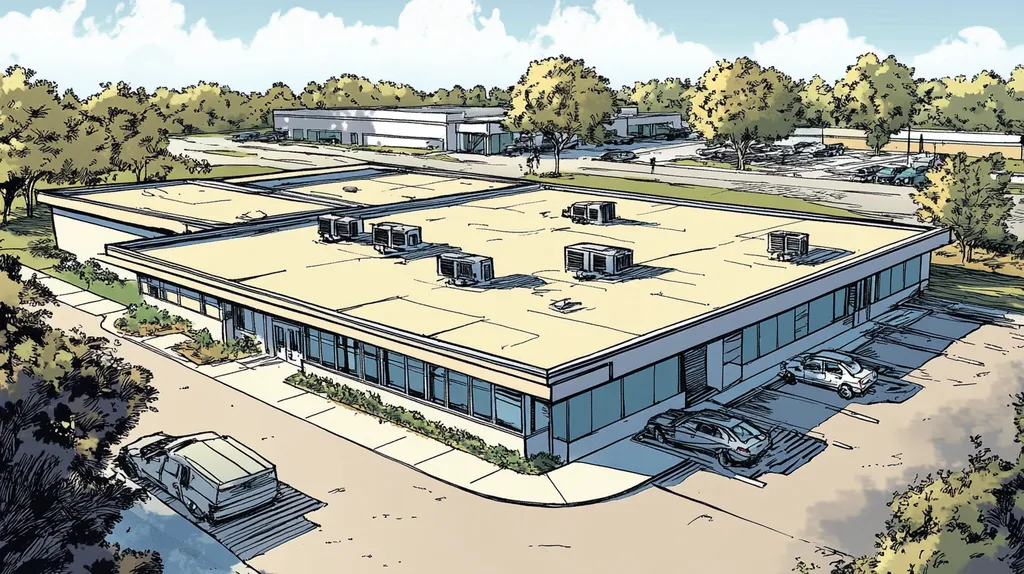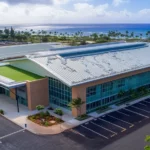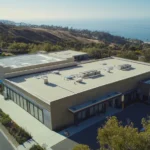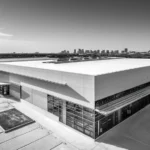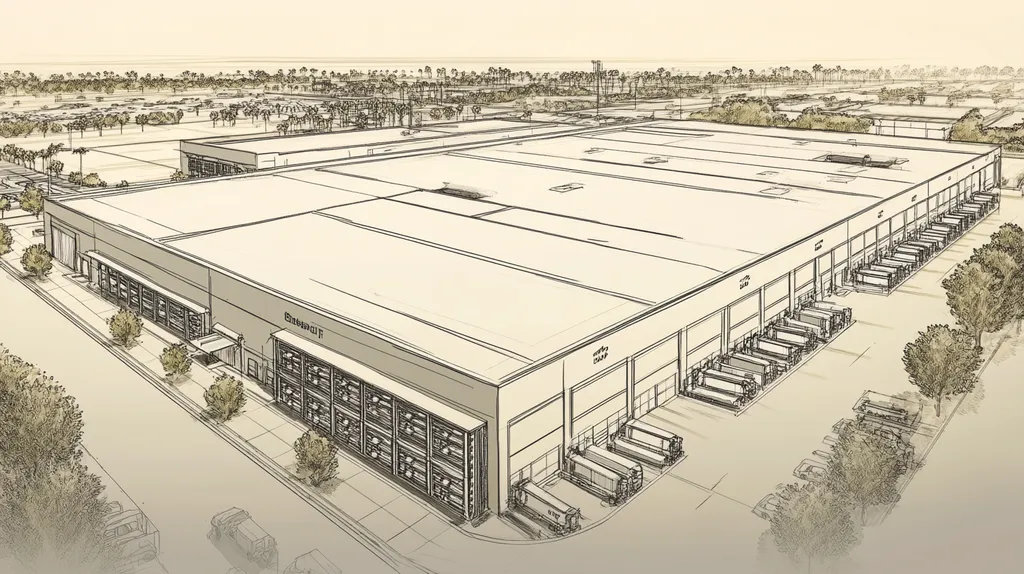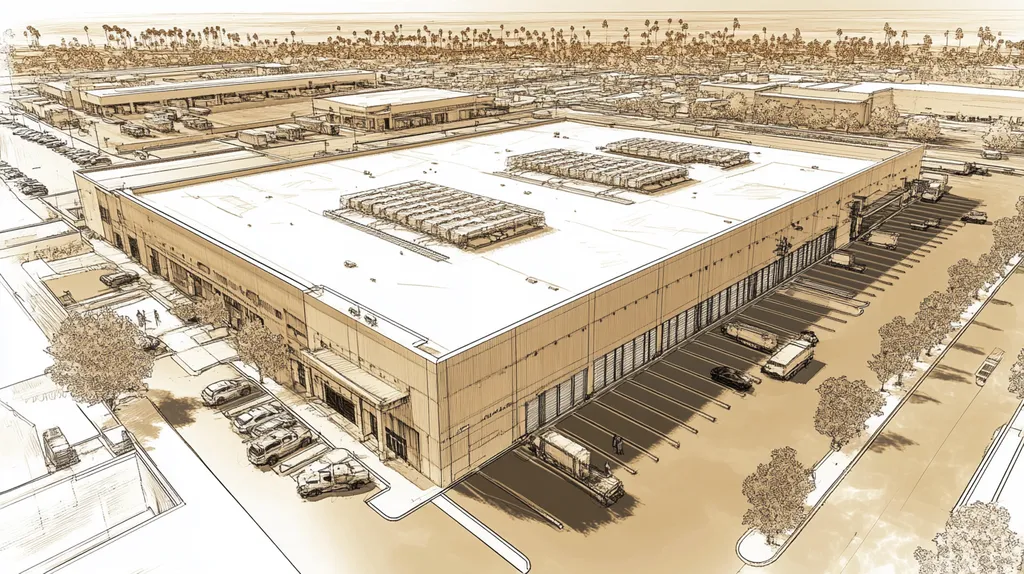Industrial roof coating failures cost property owners over $2.3 billion annually, with 40% of these failures directly linked to improper application timing. The traditional practice of restricting coatings to specific seasons is increasingly at odds with modern material capabilities and changing climate patterns.
While conventional wisdom suggests spring and fall applications are optimal, this rigid approach overlooks critical opportunities for cost-effective maintenance and enhanced building protection. Understanding why these established practices fall short requires examining systemic issues, missed opportunities, and data-driven solutions.
This analysis challenges long-held assumptions about seasonal coating applications, offering property owners and facility managers a fresh perspective on maximizing their roofing investments.
SECTION 1: CURRENT PRACTICES
The timing of industrial roof coatings is crucial and can significantly influence their success. Many property owners rely too heavily on traditional seasonal application strategies, which can lead to compromised roof durability and performance. In fact, a recent study found that 30% of property owners faced premature coating failures due to improper timing. This section will dissect current practices, exploring the limitations of seasonal scheduling, the weather factors that influence these choices, and the standard preparation procedures that are vital for achieving optimal results.
Seasonal Application Schedules
Many commercial properties cling to the outdated practice of applying roof coatings only during specific seasons. Spring and fall are typically deemed prime times, thanks to their moderate temperatures. Yet, this rigid schedule often ignores valuable opportunities for application during other times of the year.
Take, for instance, a roof that suffers damage from an unexpected winter storm. A strict seasonal schedule may delay necessary repairs until spring, potentially escalating maintenance costs and compounding existing damage.
Facilities managers often feel compelled to follow these established timelines. However, breaking free from these constraints could lead to more favorable outcomes. A proactive assessment of each roof’s condition may yield better longevity for coatings than blind adherence to tradition.
Recognizing that each roof has unique needs allows property owners to make informed decisions, rather than feeling shackled by traditional schedules.
Weather Condition Considerations
Common wisdom suggests that weather dictates coating application, with many believing cooler months are off-limits for such work. However, this view overlooks recent advancements in coating technologies that perform well under a broader range of temperatures.
For instance, specific coatings can adhere effectively even in chilly conditions below 50°F. By ignoring this flexibility, property owners may unnecessarily postpone maintenance, leaving roofs vulnerable to further damage.
Additionally, humidity and moisture levels play a significant role in the adhesion of coatings. High humidity can lead to bubbling and poor adherence. On the bright side, some modern products are now formulated to be effective even in more humid climates. Grasping these nuances can greatly enhance strategic decision-making.
Therefore, it’s essential not to let weather factors dictate every choice; rather, a nuanced understanding of modern coating products can help craft better application strategies tailored to current conditions.
Standard Preparation Procedures
The standard prep work for roof coatings typically comprises cleaning, assessing, and priming the surface. While essential, a strict commitment to traditional methods often sidelines innovative, more effective techniques.
Some property owners might rush through preparation, thinking coatings can mask underlying issues. However, thorough cleaning and repair directly influence the lifespan of a coating—something industry standards strongly advocate.
Thanks to improved technologies, some coatings are now designed for application on surfaces needing minimal prep. For example, certain products can be effectively applied directly to aged surfaces without extensive cleaning. Such innovations can save time and reduce labor costs, allowing for greater flexibility in application timing.
By staying informed about novel preparation methods, property owners can significantly enhance coating effectiveness, ultimately prolonging the lifespan and performance of their industrial roofs.
SECTION 2: SYSTEMIC ISSUES
The timing of industrial roof coatings can feel as constrained as a strict dinner schedule, but making choices solely based on temperature and humidity can lead to significant headaches. Research indicates that over 30% of coating failures arise from environmental conditions during application. Factors like extreme heat and humidity don’t just affect coating performance—they can leave buildings susceptible to damage and costly repairs. Understanding these systemic issues is essential for property owners and facility managers striving for lasting roofing solutions.
Temperature and Humidity Limitations
Temperature extremes can wreak havoc on industrial coating applications. Coatings often have specific temperature ranges for optimal adhesion and curing. When applied outside these ideal conditions, their durability can suffer greatly.
Take high temperatures, for instance—they can cause solvents to evaporate too quickly, resulting in inadequate film formation. On the flip side, low temperatures can slow curing times, compromising the strength of the bonds. Additionally, high humidity can trap moisture, leading to blistering and peeling.
Property owners must stay vigilant for microclimate variations that can differ dramatically, even within the same location. This localized insight enables the selection of the best timing for coating applications.
Neglecting the nuances of temperature and humidity can lead to increased maintenance needs and a shortened roof lifespan—both of which can strain budgets considerably.
Rain and Wind Interference
Unpredictable weather events add another layer of complexity to industrial roof coatings. Rain and wind can disrupt the application process, resulting in sloppy work that falls short of expectations. A sudden downpour right after application? That’s a recipe for washed-away materials and compromised effectiveness.
Wind is another villain in this story—it creates challenges for finishing a job neatly. Debris hurled by the wind can contaminate freshly coated surfaces, leading to adhesion issues and unsightly flaws.
To make matters worse, weather forecasts are not always reliable. Delays in application may become all too common, leaving roofs unprotected and vulnerable for longer than desired.
Overlooking the potential for weather-related interruptions can result in unreliable applications, tack on unexpected costs, and lead to painful capital expenditures later on for repairs.
Inadequate Curing Times
Curing time is a critical factor that often slips through the cracks in seasonal application strategies. Even when coatings are applied during the right timeframe, less-than-ideal temperatures and humidity can prolong curing beyond expectations.
An improperly cured coating is more susceptible to damage, UV degradation, and chemical exposure. Without proper curing, the roof surface may fall short of its intended protective capabilities, paving the way for future issues.
It’s essential to adhere to manufacturer specs for curing times, as straying from these guidelines can nullify warranties. This oversight means any emerging problems could become a financial burden down the line.
Recognizing the importance of curing can save businesses from costly missteps and enhance the longevity of their roofing systems.
SECTION 3: MISSED OPPORTUNITIES
Every year, property owners and facility managers grapple with crucial timing decisions for roof coatings. By sticking to traditional seasonal practices, they risk missing out on essential opportunities that align with their unique local climates. This oversight can translate into reduced energy efficiency, spiraling maintenance costs, and a frustratingly brief lifespan for industrial roofs.
Overlooking Local Climate Variations
Seasonal guidelines for roof coating applications can often be as rigid as an old compass, failing to account for the unique weather patterns of different regions. For example, in humid areas, applying coatings during cooler months can significantly improve performance, while arid climates might see better results with coatings during the warm season.
Ignoring these localized nuances means that property managers may inadvertently slap coatings on roofs when conditions are less than ideal, leading to adhesion issues.
This oversight can trigger premature coating failures, meaning higher maintenance costs and a roof that simply won’t last.
Ignoring Energy Efficiency Potential
Industrial roofs can be pivotal players in a building’s energy efficiency game, especially when coated appropriately. Energy-efficient coatings can reflect solar heat, which can significantly lower cooling costs during those sweltering summer months.
However, if coatings are applied without regard for local weather patterns, the chance for impactful energy savings goes down the drain. For instance, facilities in areas that bake under high summer temperatures can truly benefit from reflective coatings that are strategically timed.
Overlooking this strategy not only leads to bloated utility bills but also expands the carbon footprint, undermining any sustainability initiatives in place.
Neglecting Long-Term Maintenance
Long-term roof maintenance should be a cornerstone of the coating application process. Unfortunately, many facility managers mistakenly view seasonal coatings as mere “quick fixes,” missing the fact that timely applications can extend roof longevity.
Carefully planned coatings can prevent water entry, significantly reducing the risk of costly repairs down the line. For example, applying a breathable coating ahead of the rainy season can avert moisture buildup under the membrane, ensuring a longer-lasting roof.
Ultimately, neglecting to time coating applications effectively signals a shift towards a reactive maintenance approach, rather than one founded on proactive care.
SECTION 4: ROOT CAUSES
Identifying the root causes of ineffective industrial roof coatings is essential for property owners and facility managers. A lack of thorough planning can lead to costly repairs and unsafe conditions. For instance, skipping compatibility checks may result in coatings that fail to adhere properly, leading to peeling and flaking over time. This section delves into compatibility checks, surface preparation, and material selection—three pillars vital to successful coating applications.
Lack of Compatibility Checks
One often-overlooked aspect in industrial roof coatings is ensuring material compatibility. Applying coatings that aren’t designed for specific substrates can invite disaster. For example, using an acrylic coating over a silicone substrate might lead to insufficient bonding and premature failure.
This kind of failure results in wasted investments over time, as property owners find themselves faced with roofs that need frequent repairs. Additionally, using incompatible products can compromise structural integrity, paving the way for leaks and extensive damage.
Being aware of compatibility issues can save time and resources. Conducting thorough testing before application ensures that selected materials will bond effectively, ultimately extending the roof’s lifespan.
Failing to prioritize compatibility checks is a critical error. It can result in significant repair and replacement costs that could have been avoided with proper diligence.
Insufficient Surface Preparation
Proper surface preparation is the bedrock of any successful roofing project. Overlooking thorough cleaning and preparation of an industrial roof can substantially undermine coating performance. For instance, residual debris or loose materials can prevent coatings from adhering securely.
Many coatings are engineered to meet specific surface conditions. Neglecting this aspect often leads to blistering or premature wear, setting the stage for future complications like water ingress and insulation damage.
Inadequate preparation not only shortens the lifespan of the coating but also results in additional repair and maintenance expenses. Properties can dramatically benefit from investing in thorough surface preparation practices.
A commitment to exemplary surface preparation can significantly enhance the performance and effectiveness of any roof coating solution.
Inadequate Material Selection
Choosing the right materials is critical for maximizing the performance of industrial roof coatings. Many property owners tend to opt for lower-cost options, often overlooking long-term ramifications. This frequently results in quicker deterioration and higher future costs.
Specific climatic conditions, such as exposure to intense UV rays or extreme temperature fluctuations, demand materials tailored to withstand these challenges. For instance, a coating not designed for rigorous environments may fail prematurely, inflating maintenance costs.
Choosing inadequate materials can also lead to skyrocketing energy consumption. The right insulation and reflective coatings can greatly reduce energy expenses, yet many facilities miss out on these advantages, undermining overall ROI.
Inadequate material selection compromises roof performance and safety, making it critical for property owners to make informed choices for long-term reliability.
DATA DRIVEN EVIDENCE
Delving into historical weather data uncovers a startling revelation: seasonal application strategies may not be the golden rule they’re made out to be. Many property owners remain entrenched in traditional timelines, only to face costly failures when weather conditions play hardball. It’s vital to scrutinize data and case studies illustrating these pitfalls, enabling stakeholders to optimize the timing of industrial roof coatings and protect their bottom lines.
Historical Weather Data Analysis
Examining historical weather patterns reveals troublesome variations in temperature and humidity that can greatly affect coating performance. According to the National Oceanic and Atmospheric Administration (NOAA), regions once deemed perfect for summer applications now find themselves grappling with erratic weather patterns. This unpredictability calls for a critical reevaluation of rigid application schedules.
For some areas, successful coating applications have occurred in early fall or late spring when humidity levels are more favorable. Relying solely on traditional warm-weather months means property owners might overlook prime opportunities for optimal adhesion and durability.
Additionally, leveraging localized weather data allows property managers to tailor their coating schedules to align with regional climate trends. This data-driven timing approach can significantly boost the long-term efficiency and longevity of industrial roofs.
Ultimately, a robust analysis of historical weather data beckons a shift away from expected industry norms, embracing a more flexible mindset in application strategy.
Case Studies on Coating Failures
Multiple case studies serve as cautionary tales about the perils of sticking to established seasonal strategies, often leading to premature coating failures. A notable example comes from a large distribution center that mistakenly applied a protective coating in mid-summer. The outcome was disastrous; unexpected rainfall and high humidity resulted in significant adhesion issues.
This misstep triggered a flurry of warranty claims and hefty repair bills, highlighting the dangers of adhering to outdated timelines. Further analysis across various industrial properties has consistently shown a higher rate of peeling and blistering in coatings applied outside recommended seasons. In contrast, employing a flexible scheduling approach rooted in real-time weather data led to markedly improved application results.
These case studies underscore the pivotal role environmental conditions play in the success of roof coatings, revealing that outdated practices can cost property owners dearly in maintenance and reduced asset longevity.
Cost-Benefit Analysis of Current Practices
An insightful cost-benefit analysis of existing roofing application strategies reveals a staggering truth: adhering to seasonal norms can be a financial misstep. Property owners who stubbornly follow traditional schedules often find themselves sinking money into failed coatings, leading to damaging repairs and lost productivity.
For instance, a comprehensive review of roofing expenses identified that companies tied to traditional schedules incurred 30% more in repair costs due to failures. On the flip side, properties that adopted a dynamic scheduling method—anchored by weather analysis—enjoyed savings of up to 20% on coating-related expenses.
Furthermore, investing in weather-tracking technology can empower property managers to make informed, timely decisions. Such investment not only offers immediate savings but also extends the life of roofs, resulting in impressive long-term benefits.
In the end, considering these financial implications makes a compelling case for embracing a more adaptive approach to coating schedules, providing better outcomes than clinging to dated practices.
SECTION 6: ALTERNATIVE SOLUTIONS
When it comes to applying industrial roof coatings, sticking to traditional strategies can be like wearing a winter coat in July—ill-fitting and ineffective. Rigid adherence to seasonal patterns often leads to squandered opportunities and increased maintenance woes for property owners. By exploring adaptive application scheduling, advanced material selection, and integrated maintenance strategies, stakeholders can turn the tide for their industrial roofs, enhancing durability and saving costs.
Adaptive Application Scheduling
Adaptive application scheduling is a game changer for property owners, empowering them to shift coating times based on real-time weather conditions rather than clinging to outdated seasonal dates. This innovative approach harnesses environmental data to pinpoint the best days for application, thereby enhancing both adhesion and coating longevity.
For instance, a pleasantly warm and dry spell in early spring or late fall might offer superior conditions compared to the sweltering summer heat. By closely monitoring weather forecasts, facilities can optimize their application timing for maximum effectiveness, ensuring robust coatings that stand the test of time.
The beauty of flexibility in scheduling is that it reduces the chance of premature coating failures, allowing for proper adhesion and creating a durable protective barrier against environmental wear and tear. With adaptive scheduling, property managers can make well-informed decisions that lead to greater value from their investments.
Advanced Material Selection Criteria
The efficacy of roof coatings is profoundly influenced by material choices. Modern coatings come equipped with innovative formulations that resist UV degradation, thermal cycling, and moisture infiltration far better than traditional options ever could.
Consider silicone and polyurea coatings, which excel in resisting extreme weather and overcoming minor surface imperfections. These advanced materials can often be applied in a much broader range of temperatures and conditions, providing greater flexibility in scheduling.
When selecting coatings, it’s essential to align them with local climate realities and specific building structures. Opting for materials tailored to prevailing weather conditions can lead to significant savings over time and extend the lifespan of the roofs.
By investing in advanced materials, property owners not only bolster coating resilience but also reduce the frequency of maintenance, ultimately maximizing their return on investment.
Integrated Maintenance Strategies
Incorporating maintenance strategies throughout the roof coating lifecycle is vital for ensuring coating effectiveness. Routine inspections and maintenance can identify small issues before they escalate, dramatically cutting down on repair costs and downtime.
A well-structured maintenance program includes scheduled assessments and prompt repairs that align seamlessly with the coating’s lifespan. This proactive methodology not only preserves the integrity of the coating but also enhances its performance longevity.
Moreover, regular upkeep, such as cleaning, boosts the coating’s reflective properties, leading to improved energy efficiency and reduced utility costs. Facilities that prioritize integrated maintenance strategies enjoy lower long-term expenses and increased occupant satisfaction.
By nurturing a culture of ongoing care, property owners not only protect their investments but also extend the operational life of their roofing systems significantly.
Moving Forward
With over $2.3 billion lost annually to coating failures, the industry can no longer afford to cling to outdated seasonal application strategies.
The data clearly shows that rigid scheduling leads to a 30% higher failure rate compared to adaptive approaches that consider real-time conditions.
By embracing weather-tracking technology, advanced materials, and integrated maintenance strategies, property owners can reduce coating failures by up to 40% while extending roof life by 5-7 years.
The future of industrial roof coatings lies not in following the calendar, but in making data-driven decisions that account for local climate variations, material compatibility, and long-term maintenance needs.
The choice is clear: adapt to modern coating practices or risk watching profits literally wash away.
FREQUENTLY ASKED QUESTIONS
Q. What are common seasonal application practices for commercial roofs?
A. Many property owners stick to applying coatings in spring and fall, believing moderate temperatures ensure better adhesion. However, this rigid adherence can lead to missed opportunities for application during favorable conditions at other times of the year, risking premature failures and increased maintenance costs.
Q. How do temperature and humidity impact industrial roof coating applications?
A. Extreme temperatures and high humidity can significantly compromise coating performance. High heat may speed up solvent evaporation, while low temperatures can slow curing time. Both can result in adhesion issues, leading to premature failures that can drain budgets. Understanding local conditions is key to optimal timing.
Q. What are the risks of overlooking local climate variations?
A. Ignoring local climate variations can lead to applying coatings during unfavorable conditions, which diminishes adhesion and performance. For example, coatings applied during a humid period may fail prematurely. Understanding local weather patterns allows property owners to make timely decisions that enhance roof longevity.
Q. Why are compatibility checks vital for industrial roof coatings?
A. Ensuring material compatibility is crucial; using unsuitable coatings can lead to poor adhesion and significant defects like peeling. A lack of compatibility results in wasted resources and increased repair needs. Property owners should conduct thorough tests to ensure the selected materials will bond properly.
Q. What does data analysis reveal about traditional application strategies?
A. Data analysis shows that sticking to traditional seasonal application strategies can lead to increased failures due to unexpected weather issues. Historical data highlights the importance of monitoring conditions to better time coatings for optimal adhesion and overall roof longevity, potentially saving significant costs.
Q. How can advanced materials improve industrial roof coatings?
A. Advanced coatings have innovative formulations that resist UV rays, thermal cycling, and moisture. For example, silicone and polyurea options provide flexibility in application timing and durability against weather extremes. These materials can significantly extend the lifespan of a roof while reducing long-term maintenance costs.
Q. What are integrated maintenance strategies for industrial roofs?
A. Integrated maintenance strategies involve routine inspections and timely repairs to enhance coating effectiveness. By scheduling regular assessments aligned with the lifespan of the coating, property owners can address small issues before they escalate, ultimately reducing repair costs and extending the operational life of the roofing system.
